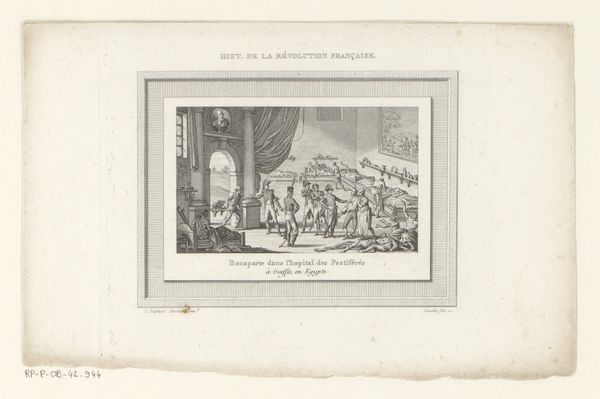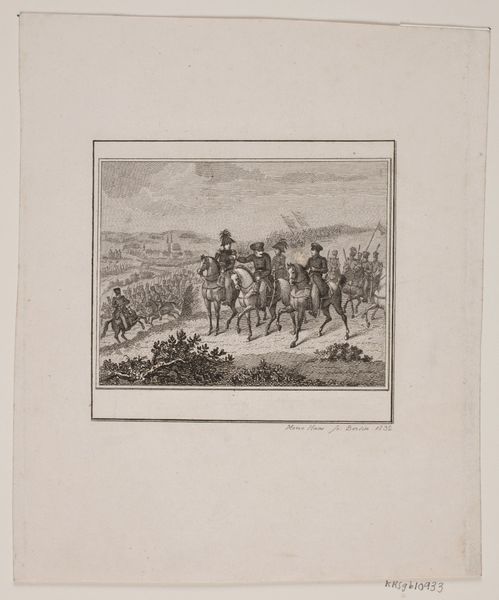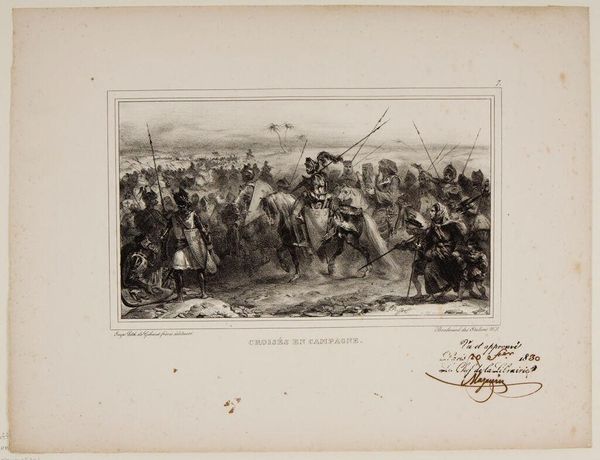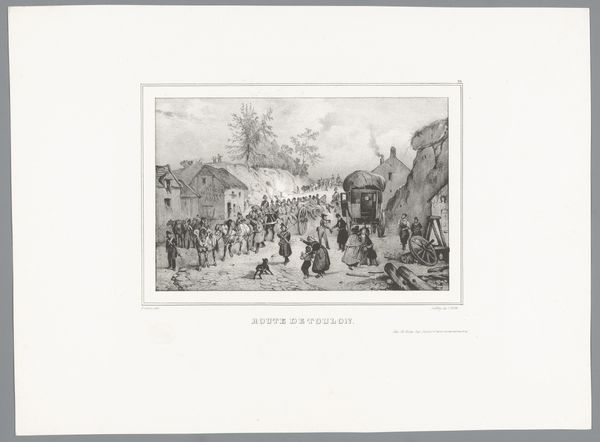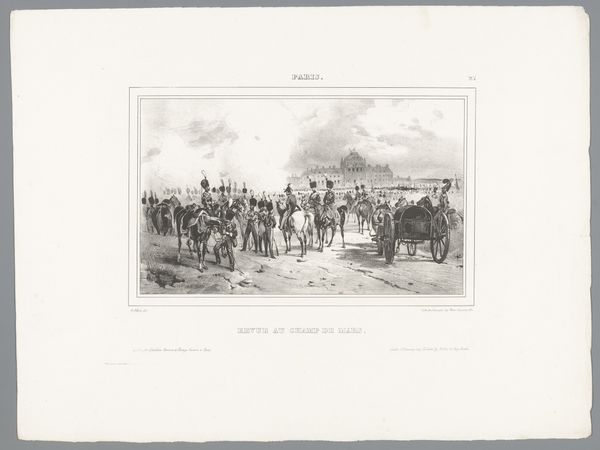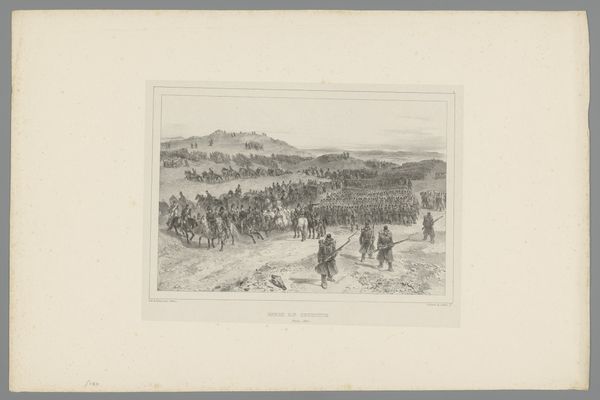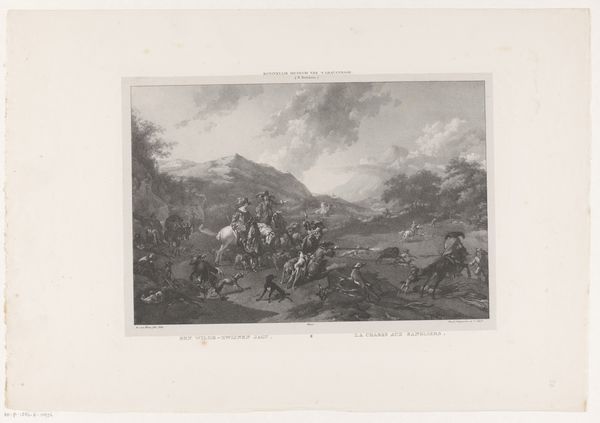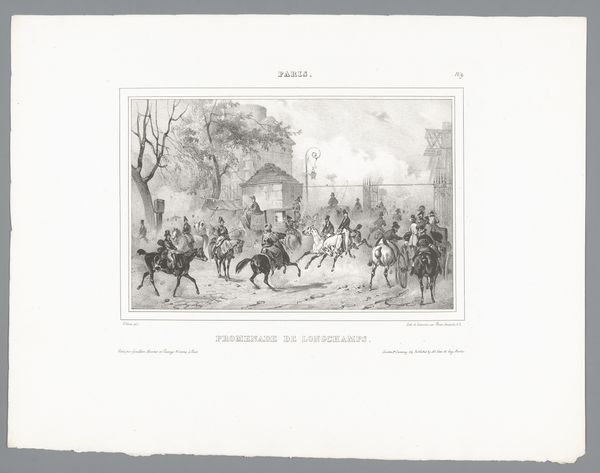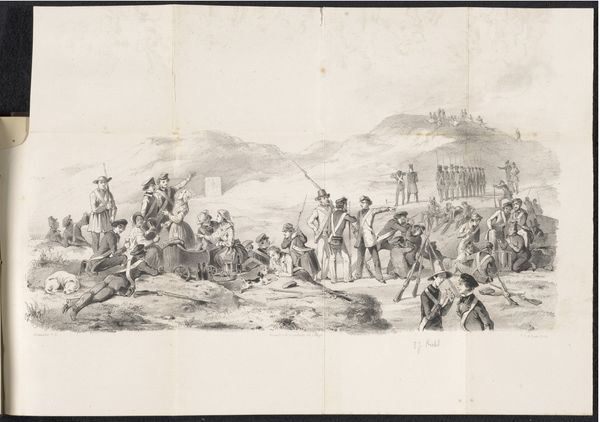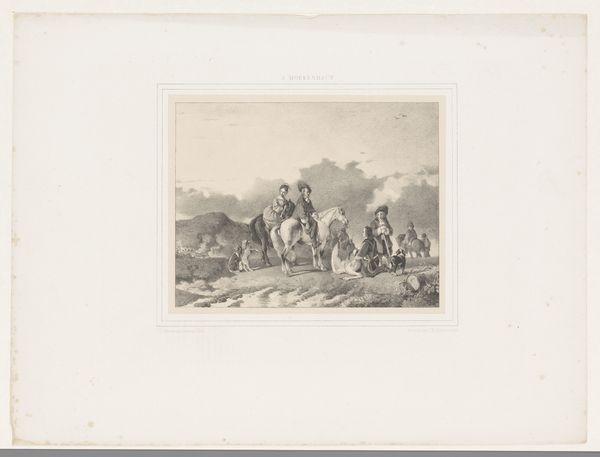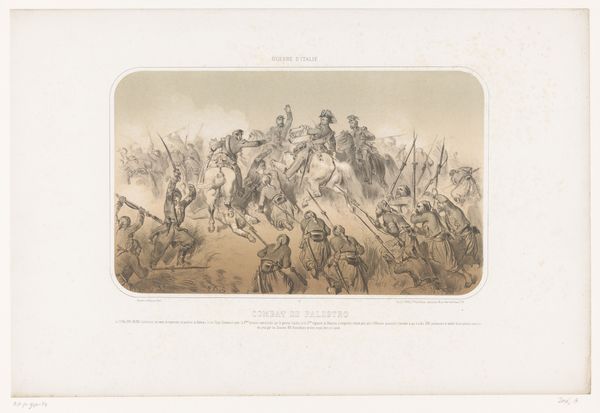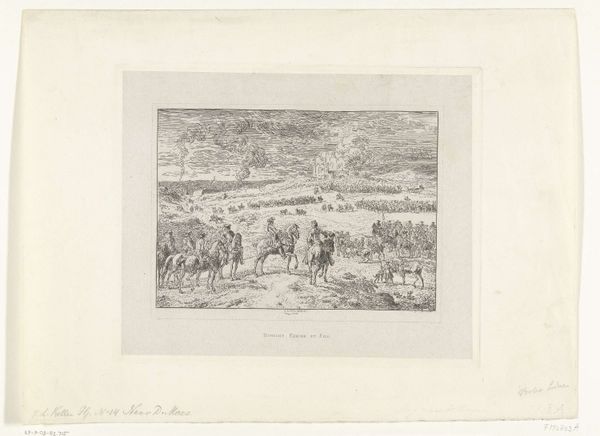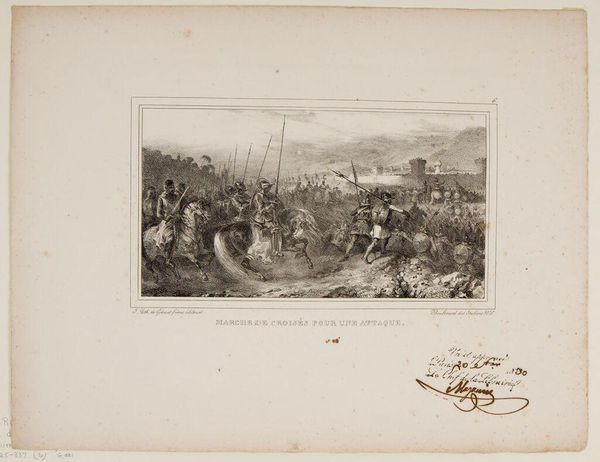
drawing, print, paper, engraving
#
drawing
#
neoclacissism
# print
#
figuration
#
paper
#
line
#
history-painting
#
engraving
Dimensions: height 139 mm, width 152 mm
Copyright: Rijks Museum: Open Domain
François Louis Couché made this print of Napoleon in Lonado, using engraving techniques, sometime around the late 18th or early 19th century. Engraving, in essence, is a process of controlled removal. With a tool called a burin, the artist carefully carves lines into a metal plate, which are then filled with ink and transferred to paper. The linear precision visible here speaks to the artist’s skill, patience, and the precision of the burin. Look closely, and you’ll notice how the varying thickness and density of these lines creates the illusion of light, shadow, and depth. Engraving had a social impact, too. It allowed for the relatively inexpensive reproduction and dissemination of images. Napoleon was a master of propaganda, and prints like this one helped to cultivate his image as a strong leader and military genius, reaching a broad audience and shaping public opinion. By attending to the materials and processes of this artwork, we can understand not only its aesthetic qualities, but also its historical and social context.
Comments
No comments
Be the first to comment and join the conversation on the ultimate creative platform.
